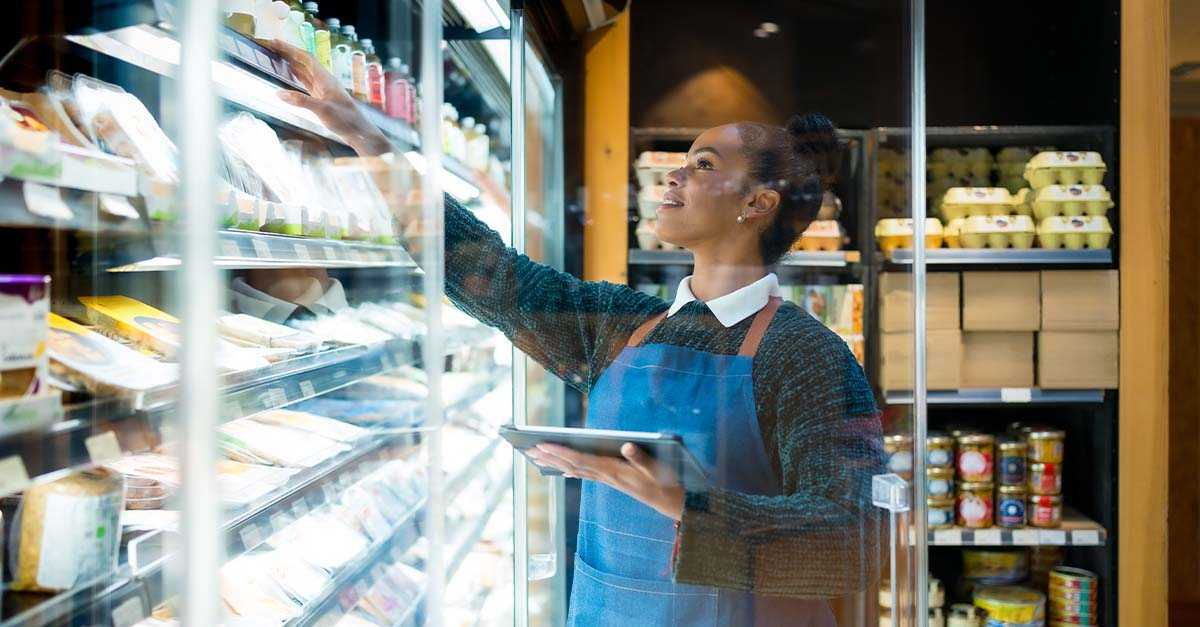
How to Reinvent the Retail Customer Experience
See how Accruent is taking flagship products in facilities management and real estate and adding key functionality and integrations to help retail ...
Solutions
Workplace Management Solutions
Real Estate Management Solutions
Maintenance Management Solutions
Energy Management Solutions
Engineering Document Management Solutions
Asset Management Solutions
Automate campus scheduling for classes, meetings, and exams with our EMS software.
Plan and manage conferences effortlessly with EMS software to impress guests and streamline operations.
Boost workplace flexibility and maximize space use with seamless desk and room booking.
Organize workplace or campus events smoothly, creating memorable experiences.
Optimize workspace, manage allocations efficiently, and reduce costs with our space management solutions.
Deliver projects on time and within budget by improving communication, collaboration, and efficiency with our software.
Streamline lease accounting for ASC 842, IFRS, and GASB compliance.
Manage leases efficiently by tracking key dates, analyzing costs, and ensuring compliance.
Centralize data and analytics for better insights, faster negotiations, and revenue growth.
Centralize facility and asset maintenance, automate work orders, and ensure compliance with our CMMS software.
Extend asset life, reduce downtime, and prevent costly repairs with data-driven monitoring.
Prevent equipment failures and extend asset life by detecting and addressing issues early.
Make sustainable, cost-efficient energy decisions by monitoring and optimizing power consumption.
Remotely monitor and control equipment with real-time data to predict issues, boost efficiency, and reduce downtime.
Easily share and collaborate on documents, creating a single source of truth for engineers and contractors.
Manage and analyze assets across their lifecycle to schedule maintenance, reduce downtime, and extend lifespan.
Improve visibility, automate work orders, and ensure compliance for efficient facility and asset management.
Resources
Browse our full library of resources all in one place, including webinars, whitepapers, podcast episodes, and more.
Support
Looking for access to technical support, best practices, helpful videos, or training tools? You’ve come to the right place.
About Accruent
Get the latest information on Accruent, our solutions, events, and the company at large.

Integral and non-integral refrigeration systems play an essential role in how you maintain food quality and safety. In fact, the industrial refrigeration systems market is expected to reach $36.5 billion by 2035, a significant growth pattern as 2024 saw valuation reach $23.3 billion. Demand is rising for cold storage across industry sectors such as grocery.
A downside to grocery refrigeration systems is they need to stay on all day, every day. Between the constant cooling and defrost, and the need for regular maintenance, refrigeration systems can become a drain on both your financial and environmental resources. System failures can lead to spoilage, unexpected repairs and loss of revenue while inefficient systems increase your carbon footprint.
On the bright side, technology can help you change the game, even as energy costs rise and sustainability priorities take precedent. With the right tools, such as anomaly detection, you can uncover inefficiencies in your refrigeration systems before it becomes a major failure.
In this article, we dig into hidden costs from refrigeration and how anomaly detection can help uplevel your predictive maintenance approach, reducing costs and risks while safeguarding profitability and sustainability.
Related Read: Navigating the New EPA Refrigeration Regulations: A Path to Sustainability and Compliance
For your grocery retail business, adequate refrigeration plays just as much of an important role in your profitability and reputation as it does in keeping food and beverages cold. However, inefficiencies and malfunctions can lead to environmental issues, potential downtime and increased costs.
Here are three cost centers you need to be aware of:
Every grocery store relies on refrigeration systems, but have you ever thought about how much costs can rise due to large scale energy consumption? Refrigeration is often one of the largest energy consumers in any store. On a global scale, 25% of electricity consumption comes from refrigeration and air conditioning and in developed countries, refrigeration uses roughly 15% of total industrial energy consumption.
When refrigeration fails, you face expenses associated with repairs as well as massive costs that can come from spoiled inventory. On top of this, any extended downtime means less product out on the floor to be sold. Inefficient systems can also lead to high energy bills and if breakdowns happen regularly, operations are disrupted leading to more maintenance costs and potential regulatory fines is food quality and safety standards are not met.
Sustainability and environmental initiatives are increasingly important when it comes to refrigeration, but data shows refrigerant leaks contribute to roughly 20% of refrigerant emissions. Higher greenhouse gas emissions means more ozone depletion. Additionally, when a unit fails it will often cycle warm air, using a substantial amount of energy. When your systems aren’t running efficiently it ends up consuming much more electricity than necessary, further compounding challenges around sustainability.
Watch: Accruent at NFMT 2025 - Asset Management Solutions tailored for the built environment
Anomaly detection technology is crucial for maintaining efficient refrigeration, supporting predictive maintenance that helps to make systems more cost-effective and keep them operational. To understand the role anomaly detection plays in supporting your refrigeration systems it’s important to understand what it is and how it works.
Anomaly detection is a subfield of machine learning. It’s primary purpose is to flag unusual behaviors in your assets before those behaviors turn into larger issues and costly breakdowns.
When applied to refrigeration systems, anomaly detection serves to identify any deviations from normal or expected performance and operational standards. It can be used to detect anomalies in energy usage consumption or specific faults within the system that need intervention and maintenance. Anomaly detection technology goes a long way in maintaining reliability of your refrigeration systems.
With anomaly detection technology, you can continuously monitor data from IoT sensors, ranging from temperature to pressure to humidity levels. This real-time telemetry data is then analyzed by machine learning algorithms to find patterns, flagging irregularities that could indicate potential systems failures. The tech is then able to alert operators of any anomalies so intervention can be quick and timely, preventing breakdowns and optimizing performance. It allows you to go from waiting for systems to fail to predicting failures early, so you can plan maintenance accordingly and minimize downtime.
Your grocery retail stores benefit greatly from IoT sensors integrated into your refrigeration systems. These sensors collect real-time data from multiple points, feeding directly into an anomaly detection model that can analyze performance and show patterns from across your entire system.
IoT sensors track critical telemetry data, like:
With this telemetry data you gain a comprehensive view of each refrigeration unit, tracking things like repairs and maintenance to get a full picture of system health and lifecycle.
Catching anomalies early is especially beneficial for multideck remote refrigeration units. These are common in grocery retail, so likely the kind of system you already have. Detecting events such as temperature fluctuations or out of sync compressor cycles lets you act before reaching a system failure. This goes a long way in avoiding losses due to food spoilage and in remaining compliant with shifting industry regulations. Additionally, when you can keep products fresh and safe consistently it builds further trust with customers.
Related Read: How CMMS and IoT Integration Can Deliver Real ROI for Retail Refrigeration
Refrigeration isn’t the only thing anomaly detection is critical for. HVAC systems also stand to benefit from this technology, especially in industries like healthcare where failures could have dire consequences. Applying anomaly detection to HVAC ensures proper predictive maintenance to keep essential systems up and running without delay. Monitoring both your refrigeration and HVAC systems creates a holistic approach to asset management, one that strengthens your long-term operational resilience.
With the right technology you can prevent problems as opposed to simply fixing them when they arise. Anomaly detection goes a long way in helping your grocery retail business reduce energy waste, protect the bottom line and lead in sustainability.
If you’re ready to find out how you can transform your grocery retail asset lifecycle management, request an Observe demo with Accruent today.
See how Accruent is taking flagship products in facilities management and real estate and adding key functionality and integrations to help retail ...
To limit greenhouse gases and ensure environmental safety and compliance, understand the EPA standards for refrigerant gases.
Avoid fines from refrigeration leaks, monitor usage, and stay compliant. vx Sustain has all your refrigeration management needs covered.
Subscribe to stay up to date with our latest news, resources and best practices.
* To unsubscribe at any time, please use the “Unsubscribe” link included in the footer of our emails.